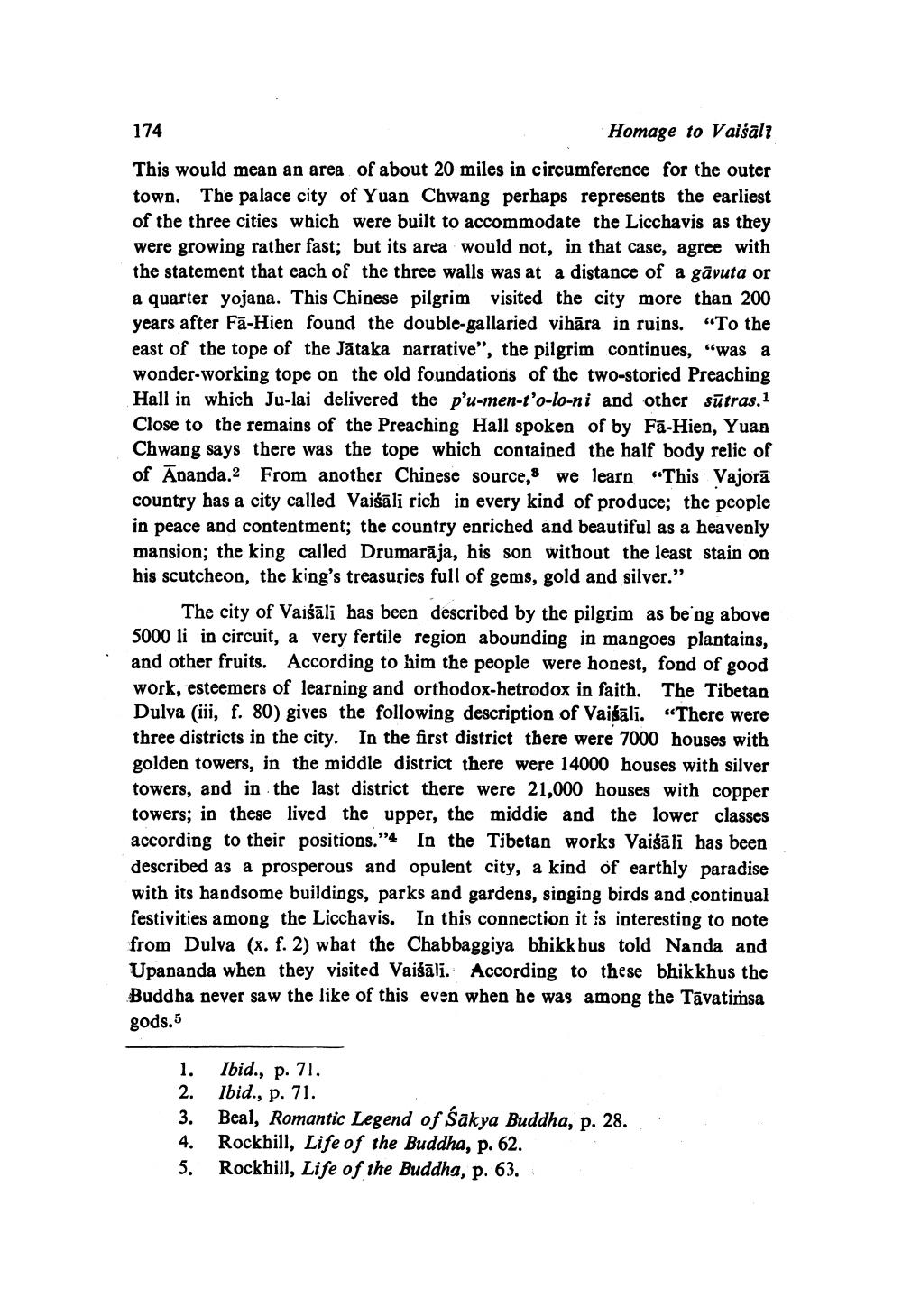________________ 174 Homage to Vaisali This would mean an area of about 20 miles in circumference for the outer town. The palace city of Yuan Chwang perhaps represents the earliest of the three cities which were built to accommodate the Licchavis as they were growing rather fast; but its area would not, in that case, agree with the statement that each of the three walls was at a distance of a gavuta or a quarter yojana. This Chinese pilgrim visited the city more than 200 years after Fa-Hien found the double-gallaried vihara in ruins. "To the east of the tope of the Jataka narrative", the pilgrim continues, "was a wonder-working tope on the old foundations of the two-storied Preaching Hall in which Ju-lai delivered the p'u-men-t'o-lo-ni and other sutras.1 Close to the remains of the Preaching Hall spoken of by Fa-Hien, Yuan Chwang says there was the tope which contained the half body relic of of Adanda.2 From another Chinese source, we learn "This Vajora country has a city called Vaisali rich in every kind of produce; the people in peace and contentment; the country enriched and beautiful as a heavenly mansion; the king called Drumaraja, his son without the least stain on his scutcheon, the king's treasuries full of gems, gold and silver." The city of Vaisali has been described by the pilgrim as being above 5000 li in circuit, a very fertile region abounding in mangoes plantains, and other fruits. According to him the people were honest, fond of good work, esteemers of learning and orthodox-hetrodox in faith. The Tibetan Dulva (iii, f. 80) gives the following description of Vaisali. "There were three districts in the city. In the first district there were 7000 houses with golden towers, in the middle district there were 14000 houses with silver towers, and in the last district there were 21,000 houses with copper towers; in these lived the upper, the middie and the lower classes according to their positions." In the Tibetan works Vaisali has been described as a prosperous and opulent city, a kind of earthly paradise with its handsome buildings, parks and gardens, singing birds and continual festivities among the Licchavis. In this connection it is interesting to note from Dulva (x. f. 2) what the Chabbaggiya bhikk bus told Nanda and Upananda when they visited Vaisali. According to these bhikkhus the Buddha never saw the like of this even when he was among the Tavatimsa gods.5 1. Ibid., p. 71. 2. Ibid., p. 71. 3. Beal, Romantic Legend of Sakya Buddha, p. 28. Rockhill, Life of the Buddha, p. 62. 5. Rockhill, Life of the Buddha, p. 63. 4. Rod




